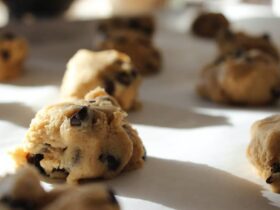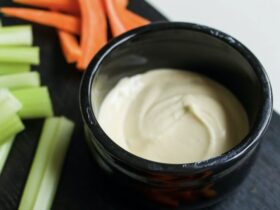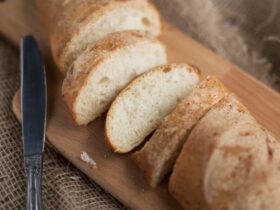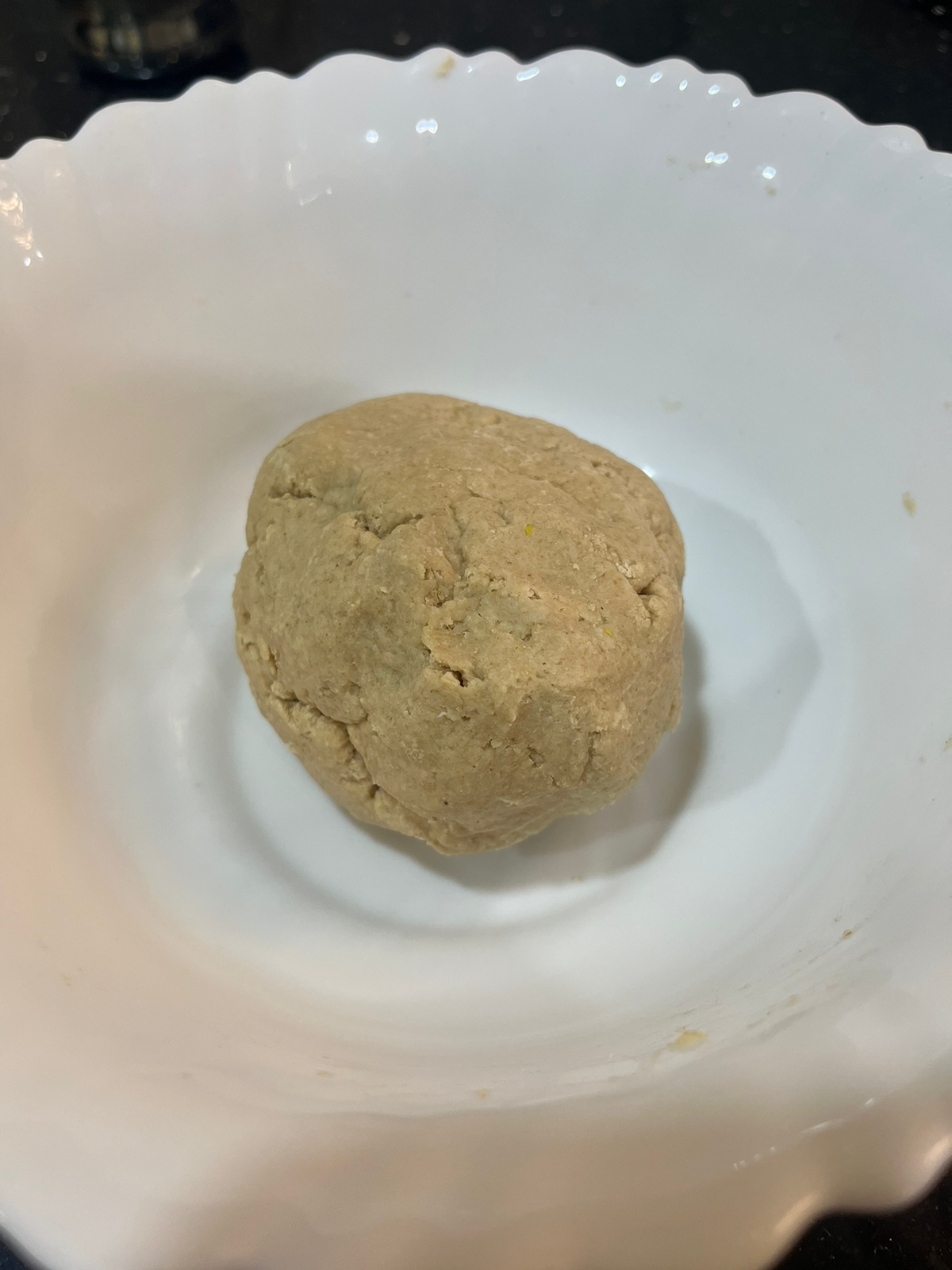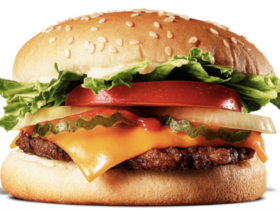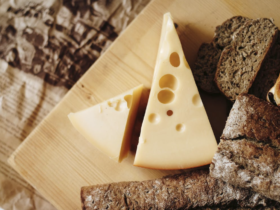Baking bread at home is a fairly difficult process. Often, even after hours of hard work, the dough doesn’t rise. So what should you do with it? Can you bake the dough that hasn’t risen yet? Dough that has not risen properly should not be baked. The result will be a thick and unpalatable mess. Although technically feasible, baking dough that hasn’t risen is not advised for this reason.
There are alternatives to baking unrisen dough into a typical loaf. You may be able to correct it; or if you prefer, roll it into a flatbread. This article will take you through your options in detail.
Can You Bake Dough That Hasn’t Risen Yet?
Due to density issues, you should not bake unrisen dough. Before baking, the yeast in the dough needs to rise. This allows the dough to undergo chemical reactions that result in pockets of air and tiny bubbles within the dough. Your dough will not result it a tasty loaf of bread without these little air pockets. Instead, it will come out dense and inedible.
This does not imply that the dough should be thrown out immediately. It might be more beneficial to incorporate the dough into another recipe. Options here include tortillas, pizza, or even croutons.
Factors That Contribute To The Unrisen Dough
When you are unable to identify the cause of why your isn’t dough rising, it can be very frustrating. You can troubleshoot the reason that the dough didn’t rise by being aware of the fundamental principles of how dough rises.
Bread rises as the yeast eats sugar and creates carbon dioxide. The carbon dioxide is then trapped by the gluten in the dough. The more sugar the yeast consumes, the more gas that is produced, and the higher your bread will rise.
1. Overheated Water
Make sure the water used is at the appropriate temperature. We advise using water that is approximately 105 to 115 degrees Fahrenheit. It should be easy to measure using a basic kitchen thermometer. The yeast will die if the liquid becomes too hot, which will prevent your dough from rising.
2. Low Temperature
Summertime is a great season to bake bread. The dough rises well because of the warm, humid conditions. Obtaining the lift you require in a colder house during the winter might be a real challenge. This is because higher temperatures, around 80°F, are ideal for yeast development.
The appropriate environment for the yeast to support the dough rising is impossible in an excessively cold kitchen. However, placing the dough inside the oven along with a pan of boiling water, is the simplest way to proof bread while it is cold. Your oven becomes a proofing chamber due to the heat and water vapors.
3. Yeast Might Be Expired
The first step to ensure your bread turns out well is ensuring the yeast is active and has not expired. Yeast is a living organism and can lose its ability to perform over time. It is important to check the expiration date on the yeast package and use the “proofing” method to test its freshness before using it in your dough. Once the yeast container is opened, the yeast can continue to be used for 3-4 months.
To ensure that the active yeast remains fresh for a long time, put it in the fridge after opening.
Quick Tip: Label the container with the date that you first opened it to determine if the yeast is still usable.
4. Varying Quantity Of Sugar Or Flour
Proper measuring is unquestionably the most crucial factor while baking bread, and may be the difference between decent bread and superb bread.
Using too much flour will prevent the yeast from getting enough room to rise, which would explain why the dough hasn’t risen.
Excessive sugar can lead to troubles with dough rising. This will happen in a similar way that adding too much flour might. Adding sugar to the dough mixture aids in absorbing moisture from the mixture. But, if there is too much sugar present, it may absorb too much liquid. This will result in the dough drying up and not rising correctly as a result.
Aiding Your Unrisen Dough
1. Boost The Yeast
If temperature and moisture are stopping the yeast from activating, you can try adding extra yeast. A teaspoon of fresh yeast should be combined with one cup (240 ml) of warm water (about 110°F) and one tablespoon of sugar.
Allow this mixture to proof for around 10 minutes, or until the foam reaches a thickness of 1/2 inch to 1 inch. If it doesn’t work, acquire some fresh yeast and try again. Place the bowl of flat dough in a warm area and slowly heat it to between 75°F and 90°F while the yeast mix proofs.
2. Add The Ingredients And Blend
Increase the amount of flour as needed. For bread doughs, a proportion of 60% flour to 40% liquid works well. Add enough flour to keep your dough balanced. Mix the active yeast into the dough, and allow it to rise in a warm, humid environment.
This may also serve as a sign that the yeast isn’t active. When the dough is introduced to yeast that has been activated using this procedure, it should rise flawlessly.
If the dough still doesn’t rise, you will know that the yeast isn’t to blame and that there is another culprit. The next time you create a yeast dough, you can also perform this step at the start of the recipe.
3. Correctly Kneading The Dough
Kneading is an art form. While kneading the dough helps to develop the gluten, over-kneading can lead to a tough, dense dough that will not rise properly.
The dough may become so tough from over-kneading that it is unable to expand. Instead of being tight like a rubber ball or soft like cookie dough, your dough must feel elastic and smooth.
4. Appropriate Temperature (80°F to 90°F)
Nothing makes yeast grow more quickly than a warm, humid environment. You must create a proof box in your oven. Raise the temperature to 80°F to 90°F and establish the optimum humidity level (~75%) if you want your dough to rise properly.
To boost the humidity in dryer climates, microwave a cup of water until it is boiling. Set the cup of boiling water in the oven alongside your dough. If you have a combination oven/stovetop, while preheating the oven, wrap a moist towel around the dough and place it on the stovetop. The moist cloth provides moisture, while the preheating the oven warms the stovetop surface.
What Can Be Done With Unrisen Dough?
Even if your dough is entirely flat, you can still use it. You need to think creatively and use it for something other than a piece of bread. If you just bake it as is, you’d end up with a thick slab of bread that isn’t enjoyable to eat.
Below are a few substitutes to attempt before you throw away your unrisen dough.
1. Make Tortillas or Flatbread
Your dough will be completely or mostly flat if it hasn’t risen. Although this might not be ideal for making fluffy bread, it can be ideal for making some kinds of flatbreads or tortillas.
To achieve this, take your preexisting dough and roll it out onto a floured surface into an extremely thin layer using a rolling pin. The flatter the better for flatbreads. Cook the rolled dough on an oiled pan until golden brown!
2. Turn It Into A Pizza
Although it takes a little more work to prepare, this method yields a high quality pizza. Just like with the flatbread method above, the thinner the crust, the better.
The dough should first be divided into little balls, which should then be rolled out to a very thin layer. After that, cover with cheese and sauce and bake it in the oven for 15 to 20 minutes at 350°F.
3. Croutons
Perhaps you were cooking bread to go with your lunch, or you wanted to serve it with a crisp green salad. Preparing homemade croutons to spruce up your salad is another technique to convert a bread failure, into a triumph.
If you’ve never tried homemade croutons, simply remember that these are far tastier than those you buy at the supermarket. Again, roll out the dough and cut into squares. Bake the squares on a cookie sheet until golden brown.
Final Words
Do not bake unrisen bread dough as is; instead, give it extra yeast to try and get it to rise. Or, create a flatbread, pizza, or some basic croutons. If the bread hasn’t risen, wasting energy on cooking it is a dead end. Be sure to check out our tips for storing your unused dough.
As always, thanks for reading, and be sure to keep your kitchen Hot and Salty!

